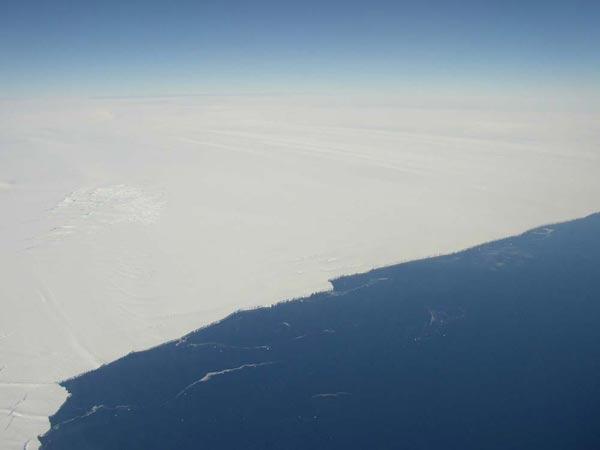
Antarctic Glacier Melting Linked to Warm Pacific Waters

The accelerated melting of two fast-moving Antarctic glaciers that drain into the polar oceans is linked to warmer waters in the tropical Pacific Ocean, a new study suggests.
The research involves the Pine Island and Thwaites Glaciers on the West Antarctic Ice Sheet, two of the five largest glaciers in Antarctica. Those two glaciers are important because they drain a large portion of the ice sheet.
As they melt from below, they also gain speed, draining the ice sheet faster and contributing to sea level rise. Eventually, that could lead to global sea level rise of as much as 6 feet (1.8 meters), though that would take hundreds to thousands of years, said study team member Eric Steig of the University of Washington.
NASA scientists recently documented that a section of the Pine Island Glacier the size of New York City had begun breaking off into a huge iceberg. Steig noted that such an event is normal and scientists were fortunate to be on hand to record it on film.
While glacier calving like this can't be directly linked to human-induced climate change, the new research does link increased melt to changes in the far away tropical oceans.
Warmer-than-usual sea-surface temperatures, especially in the central tropics, lead to changes in atmospheric circulation that influence conditions near the Antarctic coastline. Namely, a higher-than-normal sea-level pressure north of the Amundsen Sea sets up westerly winds that push surface water away from the glaciers and allow warmer deep water to rise to the surface under the edges of the glaciers, Steig said in a statement.
The warmer waters speed the melting and the flow of these outlet glaciers, as they are called.
Sign up for the Live Science daily newsletter now
Get the world’s most fascinating discoveries delivered straight to your inbox.
Recent decades have been exceptionally warm in the tropics, Steig said, and to whatever extent unusual conditions in the tropical Pacific can be attributed to human activities, unusual conditions in Antarctica also can be attributed to those causes.
Steig said that sea-surface temperatures in the tropical Pacific last showed significant warming in the 1940s, and the impact in the Amundsen Sea area then was probably comparable to what has been observed recently. That suggests that the 1940s tropical warming could have started the changes in the Amundsen Sea ice shelves that are being observed now, he said.
Steig also noted that natural variations in tropical sea-surface temperatures associated with the El Niño Southern Oscillation play a significant role. The 1990s were notably different from all other decades in the tropics, with two major El Niño events offset by only minor La Niña events.
"The point is that if you want to predict what's going to happen in the next 50, 100, 1,000 years in Antarctica, you have to pay attention to what's happening elsewhere," he said. "The tropics are where there is a large source of uncertainty."











